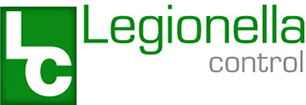AS/NZS 3666 Part 1 – Legionella Control Australia
AS/NZS 3666 Part 1 – Legionella control Australia covers air-handling and water systems of buildings, microbial control, design, installation and commissioning
AS/NZS 3666 Part 1 – Legionella control Australia covers air-handling and water systems of buildings, microbial control, design, installation and commissioning
Chlorine dioxide is highly effective when used to clean and disinfect water systems. Water hygiene is concerned with the effective management and disinfection of water to prevent pathogen proliferation, especially in stored water systems.
Written by our health sector specialist team, this Guide to Legionella Risk Assessments for Doctors, GP’s & Healthcare Professionals has been prepared to help those involved with the provision of medical and healthcare services, including GP’s and doctors, medical support staff, practice managers; and property and building service engineers.
The use of chlorine dioxide in cooling towers, closed loops and cooling systems greatly assists in the control of Legionella bacteria, algae, planktonic bacteria, biofilm and scale, helping to control the presence of dangerous bacteria and maintain the efficiency of heat exchanger surfaces, reservoir intakes, and ancillary equipment.
For landlords, property owners and managers, legionella compliance is an essential organisational risk management process that must be carefully managed. The consequences of getting it wrong can be serious, particularly for those individuals involved with an outbreak of Legionnaires’ disease, including the responsible organisation and its staff.
AS 5059 covers power station cooling tower water systems and the management of Legionnaires’ disease health risks.
The bacterium that causes Legionnaires’ disease is widespread in nature. It mainly lives in water, for example ponds, where it does not usually cause problems.
All legionella monitoring programmes for cooling water systems should include routine sampling and testing for the presence of bacteria, both general (aerobic) bacterial species and Legionella bacteria.
The bacterium that causes Legionnaires’ disease is widespread in nature. It mainly lives in water, for example ponds, where it does not usually cause problems.
The UK’s Health & Safety Executive’s final report in to the events surrounding the Barrow outbreak of Legionnaires’ disease in 2002.
This site uses cookies. By continuing to browse the site, you are agreeing to our use of cookies.
OKLearn more